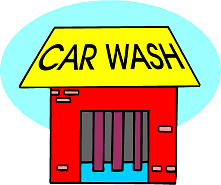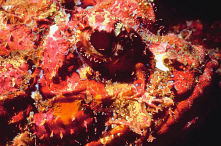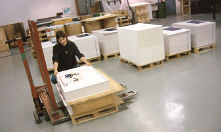Description
IRS Tax Audit Manual for the Car Wash Industry

The Internal Revenue Service assigned six Revenue Audit Agents to study the car wash industry and prepare a manual to train other Revenue Agents auditing taxpayers involved in the Car Wash Industry.
The IRS MANUAL written specifically for Internal Revenue Service Audit Agents to use for conducting audits of taxpayers in the Car Wash Industry can be yours today.
Would you like to have INSTANT and UNLIMITED ACCESS to this AMAZING manual? Download NOW!
According to the International Car Wash Association, there are approximately 22,000 car washes in the United States and Canada, nearly 90% are operated by the owners who are small business persons. Statistics show that there are approximately 350,000 car wash employees in the United States. It is also estimated that 65% of these car washes dispense gasoline.
Where Does The Internal Revenue Service Learns About YOUR Particular Business?
Sources of information have been divided into two categories: internal and external. Internal sources are those available from within the IRS while external sources represent all others outside the Internal Revenue Service.
These sources provide information relative to income and assets of the taxpayer and may assist the examiner in the classification of a particular tax return. Generally, one phone call from an IRS Audit Agent will enable the examiner to proceed with the information search for that particular party.
Internal Revenue Sources Of Information:
- Currency and Banking Retrieval System
- IDRS Research and Command Codes
- Information Return Processing Transcripts
- Information On Tax Return
- Third-Party Sources Of Information
- Registry/Department of Motor Vehicles
- State and Local Offices
- Tax Assessor’s and Collector’s Offices
- County Registry of Deeds
- Court Records
- Local Water Department
- Local Electric Company
- Soap/Chemical Manufacturers
- Equipment Manufacturers
- The National Weather Service
Learn what the Internal Revenue Service will gather from each of these agencies to help them prepare to audit your Car Wash. DOWNLOAD YOUR COPY NOW!
The Focus Of The Internal Revenue Service Is Intense! Take a sneak peek into what the Internal Revenue Service tells its Auditors to look at when auditing a Car Wash –
From Chapter 3…
Since many businesses in this industry are cash oriented, have weak internal controls, lack an audit trail, and have inadequate books and records, the examiner’s audit should focus on probing for unreported income.
An important part of this probe is to verify all sources of nontaxable income and particularly for determining taxable income under the net worth method, the cash on hand at the beginning and end of the tax year under exam. Taxpayers may tell an examiner that they had a certain sum of money on hand at the beginning of the year, which was used to pay either business or personal expenses, in order to explain an understatement arrived at by the examiner (commonly referred to as a cash hoard).
It is crucial that the examiner determine the existence of any cash hoard at the early stages of the audit. If the examiner addresses this issue at the initial interview and the taxpayer states there were no large sums of cash available to spend, he or she will be hard-presses to use that argument to refute a proposed understatement of income.
Hey, that’s just one paragraph – imagine a whole manual!
You will be ASTOUNDED by the amount of information the Internal Revenue Service has on-hand and ready to use concerning the Car Wash Industry.
Can You Afford NOT TO KNOW What Else The IRS Tells Its Auditors?
GUARANTEED to be chock-full of ALL of the information you need to survive an audit from the IRS in an easy to understand format!
Download the IRS tax audit manual for the Car Wash Industry NOW!
Don’t Delay…..Reserve Your Copy TODAY!
TABLE OF CONTENTS
- Chapter 1, Introduction
- Background 1-1
- Facilities 1-1
- Other Businesses and Services 1-2
- Owners 1-2
- Equipment 1-3
- Types of Entities 1-3
- PIA/SIC Codes 1-3
- Method of Accounting 1-3
- Books and Records 1-3
- Chapter 2, Pre-audit Analysis
- Background 2-1
- Internal Sources 2-1
- Currency and Banking Retrieval
- System 2-1
- IDRS Research Command Codes:
- RTVUE And BRTVU 2-2
- IRP Transcripts 2-2
- Information on Tax Return 2-2
- External Sources 2-4
- Registry/Department of
- Motor Vehicles 2-4
- State and Local Offices 2-4
- Tax Assessor’s and Collector’s
- Offices 2-4
- County Registry of Deeds 2-4
- Court Records 2-5
- Other Third Party Sources Indigenous
- to the Industry 2-5
- Local Water Department 2-5
- Local Electric Company 2-5
- Soap/Chemical Manufacturers 2-5
- Equipment Manufacturers 2-5
- National Weather Service 2-6
- Chapter 3, Initial Interview
- Background 3-1
- Chapter 4, Examination Techniques
- Income — Gross Receipts 4-1
- Daily Sales Summary Sheets 4-1
- Car Counters 4-1
- Income from Self Service Activities 4-2
- Consumption Methods 4-3
- Expenses 4-6
- Wage Expenses –
- Employee v. Independent Contractor 4-6
- Cost of Goods Sold – Inventory 4-8
- Officer Compensation 4-9
- Repairs 4-9
- Rents 4-9
- Depreciation 4-10
- Insurance 4-10
- Balance Sheet 4-11
- Shareholder Loans 4-11
- Loans Between Affiliates 4-11
- Buildings and Other
- Depreciable Assets 4-12
- Chapter 5, Case Studies
- Introduction 5-1
- Case Study 1
- Gross Receipts –
- Traditional Indirect Methods 5-3
- Facts 5-3
- Summary of Indirect Method Results 5-4
- Case Study 2
- Gross Receipts –
- Water Consumption Method 5-5
- Facts 5-5
- Summary of Indirect Method Results 5-6
- Case Study 3
- Gross Receipts Soap/Chemical
- Consumption Method 5-7
- Facts 5-7
- Summary of Indirect Method Results 5-8
- Case Study 4
- Inventory 5-9
- Facts 5-9
- Total Adjustment 5-10
- Case Study 5
- Distribution Versus Wages 5-11
- Facts 5-11
- Case Study 6
- Net Income from Self Rented
- Property 5-13
- Facts 5-13
- Case Study 7
- Rents Paid in Excess of
- Fair Rental Value 5-15
- Facts 5-15
- Case Study 8
- Lease Versus Purchase 5-17
- Case Study 9
- Depreciation of Car Wash Tunnels 5-19
- Facts 5-19
- Case Study 10
- Health Benefits Paid by
- S-Corporation 5-21
- Facts 5-21
- Case Study 11
- Imputed Interest on
- Below-Market Loans 5-23
- Facts 5-23
- Loan from Shareholder 5-24
- Indirect Loans Between
- Affiliated Corporations 5-25
- Case Study 12
- Loan Versus Dividend 5-27
- Facts 5-27
- Glossary G-1
- Appendix
- A.Initial Interview Questionnaire A-1
- B. Indirect Method – Water Consumption Analysis Format B-1
- C. Indirect Method – Soap/Chemical Consumption Analysis Format C-1
- D. Inventories: Minimum Checks Suggested for Examiner’s Workpapers D-1
- E. Pro Forma Initial Document Request for Sole Proprietorship Car Wash E-1
- F. Pro Forma Initial Document Request for Corporate Car Wash F-1



